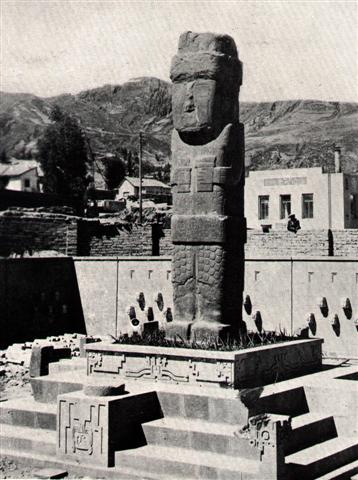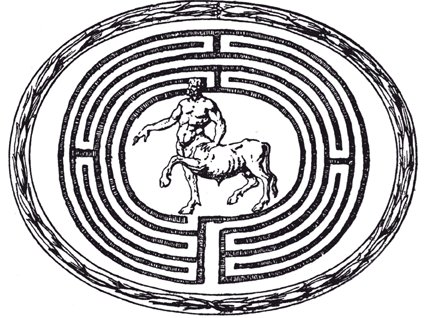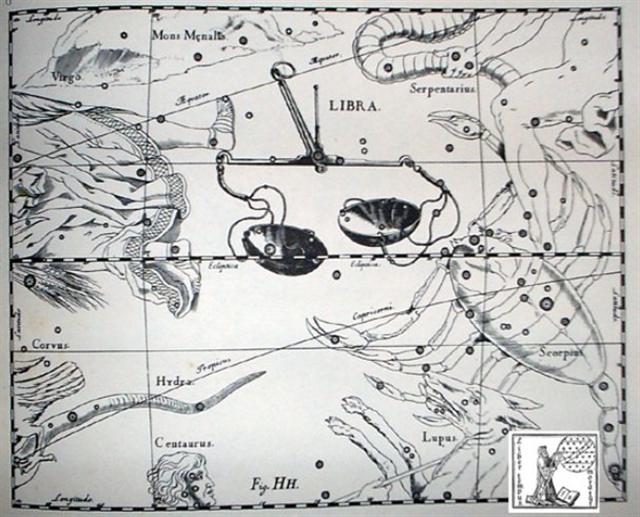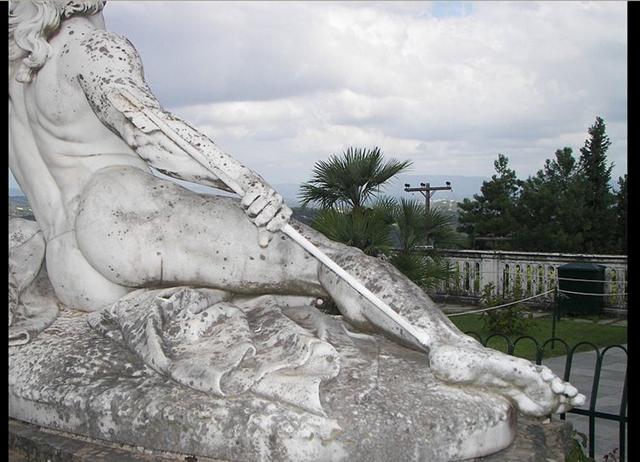RIGEL
The Foot (Rigel) - foothold - seems to mark a beginning with Antares
coming later at the
other end.

Because as if by chance the declination distance from Rigel to Antares in 26°
S - 8° S = 18°, which suggests (→) we south of the equator
should count a quarter of 360° as 18° + 72°.
180 (a pair of quarters) would then
be equal to twice (18 + 72) = 6 * 6 + 12 * 12.
Where 6 * 6 → 366 - 300 and where
300 - 144 = 156 = twice 78 (→ *78 at Rigel)
36 ↔ 360° and 54 ↔ 540°
↔ 1½ *
360°.
|
Polygon: |
n |
A |
A / n |
|
|
triangle |
3 |
180° |
60° |
120 = 2 * 60 |
|
rectangle |
4 |
360° |
90° |
270 = 3 * 90 |
|
pentagon |
5 |
540° |
108° |
432 = 4 * 108 |
|
hexagon |
6 |
720° |
120° |
600 = 5 * 120 |
Counting the right ascension
distance from Rigel (*78) to Antares (*249) will reveal another
'embellishment' in Mother Nature (Pachamama):

|
Rigel |
*171 |
Antares |
*195 |
Rigel |
|
*78 |
*249 |
*444, *78 |
|
If we should
perceive heliacal Rigel as the place which south of the
equator ought to correspond to the place for January 1
north of the equator, then the place for heliacal
Antares will correspond to June 21 (day 172). |

The Foot of Virgo, 'on the other hand', - although on her
right leg - indicates an ambivalent
(double) function.
The front (with her toes) is
disturbing Libra (the Balance),

whereas her Heel (the back side of her foot) will
generate a stabilizing effect. The front side (*) and the back side
(†)
are complementary.


North of the equator the Heel is the target of the northern horn of the Bull (Elnath,
the Butting One, *80):



 |
 |
 |
 |
|
Ca10-4 |
Ca10-5 (260) |
Ca10-6 (9 * 29) |
Ca10-7 (262) |
|
Dec 5 |
Dec 6 |
Dec 7 (341,
*261) |
Dec 8 |
|
...We should now of course take a look
at June 6 according to
Ca10-5 (260) and also at December 6 (340) where the
planet Mars was bound to cross over his own path.
 |
|
Mula-19 (The Root)
*259 |
RAS ALGETHI |
Sarin
(*261.0), ο Ophiuchi (*261.4)
ALRISHA
|
θ Ophiuchi,
ν Serpentis, ζ, ι Apodis (*262.4) |
|
5h (*76.1)
CURSA
(*76.4)
ψ (65)
ERIDANI |
*77 |
CAPELLA
(*78.4)
THUBAN
|
*262 + *183
= *445
ARCTURUS
|
|
June 5 |
6-6 (314
/ 2) |
June 7
(158, *78) |
June 8 |
|
"April 25 (115) |
26 (4 *
29) |
27 (158 - 41
= 117, *37) |
"April 28
(→ 4 * 29½) |
|
APRIL 2
(*12) |
3 (93 → 3
* 31) |
4 (158 - 64
= 94, *14) |
APRIL 5
(95, *79 - *64) |
|
te kiore - te
inoino |
kua oho te rima kua
kai - ihe nuku hoi |
Tupu te toromiro |
kua noho te vai |
|
Kiore.
Rat. Vanaga. Rat, mouse; kiore
hiva, rabbit. P Pau., Mgv.: kiore, rat,
mouse. Mq.: kioē, íoé, id. Ta.: iore,
id. Churchill.
... In China, with Capricornus,
Pisces, and a part of Sagittarius, it [Aquarius]
constituted the early Serpent, or Turtle, Tien Yuen;
and later was known as Hiuen Ying, the Dark
Warrior and Hero, or Darkly Flourishing One, the
Hiuen Wu, or Hiuen Heaou, of the Han dynasty,
which Dupuis gave as Hiven Mao. It was a symbol
of the emperor Tchoun Hin, in whose reign was a
great deluge; but after the Jesuits came in it became
Paou Ping, the Precious Vase. It contained three of
the sieu, and headed the list of zodiac signs as
the
Rat, which in the far East was the ideograph for
'water', and still so remains in the almanacs of Central
Asia, Cochin China, and Japan ...

... The decoded meaning of the
names 'the dark rat' (i.e.,
the island king
as the recipient of gifts) and 'the gathering
place of the island population' (for the purpose of
presenting the island king with gifts) links them
with the month 'Maro', which is June ... |
.jpg)
 |
 |
|
 |
|
Ca10-8 |
Ca10-9 (264) |
Ca10-10
(→ 365 - 100) |
|
Dec 9 |
10 |
11 (345 → 3 * 115) |
|
*263 |
LESATH (Sting) |
Al Shaula-17
SHAULA (Sting)
HAMAL (α ARIETIS)
|
|
BELLATRIX (γ), Saif al
Jabbar (*80.7), ELNATH (*80.9) |
NIHAL (*81.7) |
KHUFU
MINTAKA (*82.4), ε Columbae (*82.6) |
|
June 9 (2 * 80) |
10 (161) |
11 |
|
"April 29 |
30 (161 - 41 = 120) |
"May
1 (11 * 11) |
|
APRIL 6 (192 / 2) |
7 (161 - 64 = 97) |
8 (2 * 49)
|
| te moko |
te marama |
te kava |

... A une certaine saison, on amassait des
vivres, on faissait fête. On emmaillottait un corail, pierre de
defunt lézard, on l'enterrait, tanu. Cette cérémonie
était un point de départ pour beaucoup d'affaires, notamment de
vacances pour le chant des tablettes ou de la prière, tanu i
te tau moko o tana pure, enterrer la
pierre sépulcrale du lézard de sa prière
...
 |
 |
|
 |
 |
|
Ca10-11 (266) |
Ca10-12 |
Ca10-13 |
Ca10-14 |
|
Dec 12 |
13 |
14 (→ 12 * 29) |
15 (349) |
|
RAS ALHAGUE
(Head
of the Serpent Charmer)
|
*267 |
APOLLYON |
MULIPHEN (*269.0) |
|
KHAFRE
Al Hak'ah-3 (White Spot)
/
Mrigashīrsha-5 (Stag's Head)
/
Turtle Head-20 (Monkey)
/
Mas-tab-ba-tur-tur (Little Twins)
Arneb (*83.0, φ¹ Orionis
(*83.1), HEKA (*83.2), Hatysa (*83.5), φ² Orionis (*83.6), ALNILAM
(*83.7) |
MENKAURE
Three Stars-21 (Gibbon)
/
Shur-narkabti-sha-shūtū-6 (Star in the Bull
towards the south)
/
ANA-IVA-9 (Pillar of exit)
HEAVENLY GATE, ν
Columbae (*84.0), ALNITAK, PHAKT (Phaet) (*84.7) |
*85
YANG MUN (α LUPI) |
*86 |
|
June 12 |
13 (164) |
14 |
15 |
|
"May 2
|
3 (123) |
4 |
5 (5 ' 5
* 5) |
|
APRIL 9 |
10 (100) |
11 |
12 |
| manu rere |
te mauga tuu toga |
kua tupu te mea - i te inoino |
ka tupu te toromiro - i te inoino |
|
Mea. 1.
Tonsil, gill (of fish). 2. Red (probably because it is the colour of
gills); light red, rose; also meamea. 3. To grow or to exist
in abundance in a place or around a place: ku-mea-á te maîka,
bananas grow in abundance (in this place); ku-mea-á te ka,
there is plenty of fish (in a stretch of the coast or the sea);
ku-mea-á te tai, the tide is low and the sea completely calm
(good for fishing); mau mea, abundance. Vanaga. 1. Red;
ata mea, the dawn.
Meamea, red, ruddy,
rubricund, scarlet, vermilion, yellow;
ariga meamea, florid;
kahu meamea purple;
moni meamea, gold;
hanuanua meamea, rainbow;
pua ei meamea, to make
yellow. Hakameamea, to
redden, to make yellow. PS Ta.: mea,
red. Sa.: memea,
yellowish brown, sere. To.: memea,
drab. Fu.: mea, blond,
yellowish, red, chestnut. 2. A thing, an object, elements (mee);
e mea, circumstance;
mea ke, differently,
excepted, save, but; ra mea,
to belong; mea rakerake,
assault; ko mea, such a
one; a mea nei, this;
a mea ka, during;
a mea, then;
no te mea, because, since,
seeing that; na te mea,
since; a mea era, that;
ko mea tera, however,
but. Hakamea, to prepare,
to make ready. P Pau., Mgv., Mq., Ta.:
mea, a thing. 3. In order that, for. Mgv.:
mea, because, on account
of, seeing that, since. Mq.: mea,
for. 4. An individual; tagata mea,
tagata mee, an
individual. Mgv.: mea, an
individual, such a one. Mq., Ta.:
mea, such a one. 5. Necessary, urgent;
e mea ka, must needs be,
necessary; e mea, urgent.
6. Manners, customs. 7. Mgv.:
ako-mea, a red fish. 8. Ta.:
mea, to do. Mq.: mea,
id. Sa.: mea, id. Mao.:
mea, id. Churchill. |

|













.jpg)





